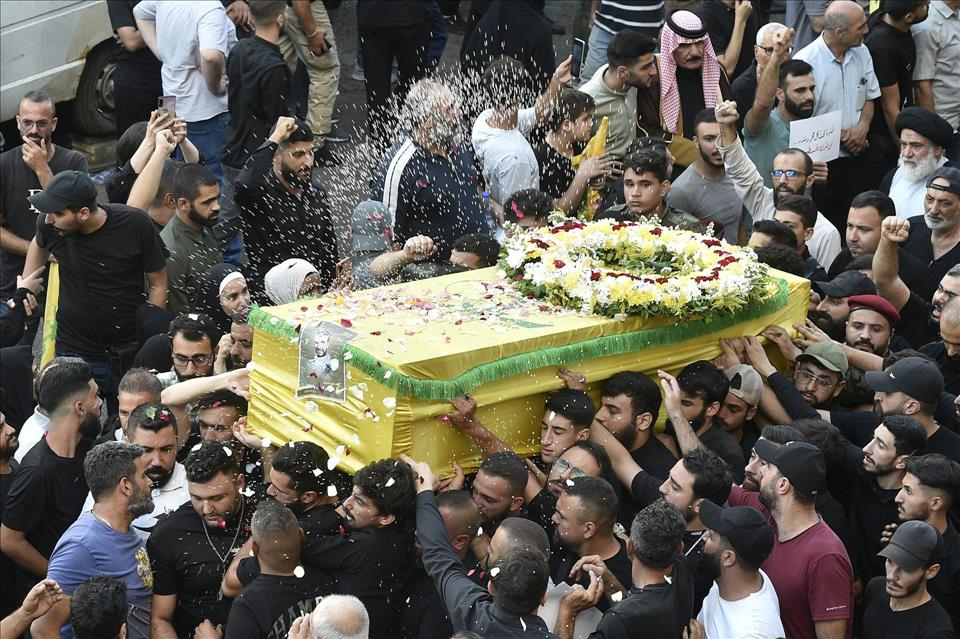
Pager And Walkie-Talkie Attacks On Hezbollah Look Like War Crimes International Legal Expert
Many analysts and politicians are now speculating that the conflict between Israel and Hezbollah, which has been simmering during the 11-month conflict in Gaza, will spiral into open warfare.
Read more: Will the exploding pager attack be the spark that ignites an Israel-Hezbollah war?
Far from taking place in a legal vacuum, the attacks are governed by international humanitarian law (IHL). This is the international legal regime that regulates the conduct of hostilities in situations of armed conflict.
Since the Hamas attacks on October 7 provoked Israel's ferocious response in Gaza, Israel and Hezbollah have been involved in a series of cross-border hostilities. These qualify as what is called a “non-international armed conflict” , to which IHL applies. This includes the rules set out in, among other instruments, the Geneva conventions .
In pursuing the objective of protecting civilians in wartime, the Geneva conventions rely on the fundamental principles of“distinction” and“proportionality”.
What international law saysThe principle of distinction essentially requires belligerents to distinguish at all times between the civilian population and combatants.
Combatants are lawful targets and can be attacked at all times. But intentionally attacking civilians is prohibited and constitutes a war crime under the Rome statute of the International Criminal Court. To this end, military commanders are under an obligation to do everything feasible to verify that the target of an attack is not a civilian.
Even assuming that only Hezbollah members were using the radios and pagers at the moment of the attacks, that does not mean that they shall be presumed to be combatants (and, therefore, lawful targets). Under IHL , a combatant is a“member of the armed forces of a party to the conflict”. This comprises“all organized forces, groups and units which are under a command responsible to that party for the conduct of its subordinates”.
By contrast, whoever is not a member of the armed forces of a party to the conflict is a civilian and subject to the protection of IHL.
There is no doubt that members of the military wings of Hezbollah are“members of the armed forces”, so they qualify as combatants. But those members of Hezbollah's political wing who are not combatants should be considered as civilians and accordingly, are protected from attack.
Civilians may lose protection from attack for such time as they take a direct part in hostilities . This includes conduct like the intentional killing of civilians and carrying out acts which adversely affect the military capacity of a party to an armed conflict – for example, the planning of attacks against Israel.
The pagers were detonated at 3:30, on September 17 in hundreds of locations in Beirut and other Lebanese cities. Abaca Press / Alamy Stock Photo
What about the attacks against members of Hezbollah's military wing?
In this case, complying with the principle of distinction does not suffice, since the attack must also respect the principle of proportionality . This requires that the expected“collateral damage” (that is, the incidental killing or wounding of civilians) should not be excessive to the“concreted and direct military advantage” anticipated from the attacks.
Launching an attack with the knowledge that it would cause excessive collateral damage also constitutes a war crime .
Collateral damageIn this case, the attacks killed several civilians. These included the nine-year-old daughter of a Hezbollah member, an 11-year-old boy and at least two health workers. Moreover, the attacks injured thousands more, including Iran's ambassador to Lebanon .
Although we do not know how many of those killed or injured were civilians, it seems logical that the level of collateral damage to be expected from the attacks would be substantial. After all, the pagers and radios were remotely detonated at the same time, exploding in crowded places such as markets and funerals. In these situations, the likelihood of killing and wounding civilians is extremely high.
These elements suggest that the expected incidental damage is excessive to the military advantage anticipated from the pager attacks – which, at the time of writing, remains unclear.
But it's important to note that what amounts to“excessive” incidental damage is subject to disagreement. On the one hand there are those who, like the International Committee of the Red Cross , believe that extensive incidental damage is always excessive. Others – including the Israeli government – consider that even extensive incidental damage is allowed if the attack results in a high amount of military advantage.
In my opinion, Israel's interpretation should be rejected. It turns IHL's aims of protecting the civilian population on its head and allows for unrestricted warfare.
My conclusion, based on the available information, appears to be that the pager and walkie-talkie attacks purportedly carried out by Israel against Hezbollah members appear to violate the principles of distinction and proportionality. In other words, they could well amount to war crimes.

Legal Disclaimer:
MENAFN provides the
information “as is” without warranty of any kind. We do not accept
any responsibility or liability for the accuracy, content, images,
videos, licenses, completeness, legality, or reliability of the information
contained in this article. If you have any complaints or copyright
issues related to this article, kindly contact the provider above.


















Comments
No comment